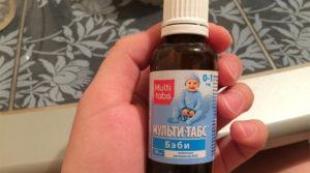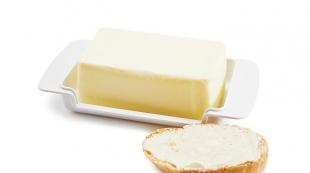How to stick wallpaper on the ceiling alone. Do-it-yourself high-quality repairs: how to glue wallpaper on the ceiling
Ceiling wallpaper gluing is one of the most difficult stages of repair in any room. This will require special preparation, effort and material. After all ordinary wallpaper not suitable for ceilings.
They will simply peel off. But the process of applying ceiling wallpaper itself has many features that need to be analyzed in more detail. Read all the nuances in our today's article.
It is better to refrain from this operation if you live in an old house. After all, in Soviet times the ceilings were laid out from slabs, respectively, every one and a half meters the surface will have a joint that cannot be blocked.
In addition, the plates often lie at different angles and have unequal heights. This can only be seen after removing the previous coating. If this situation is familiar to you, it is much safer and more thoughtful to install stretch ceiling, which will effectively hide these shortcomings.
Also, do not use wallpaper on the ceiling in the kitchen and bathroom. Indeed, in these rooms, hot steam rises, and due to humidity, the material begins to peel off.
Thus, the wallpaper on the ceiling in these rooms will not last long. They will most likely peel off after a few weeks of use. Maximum - in a month.
What wallpaper is suitable for the ceiling?
You should not take wide rolls, because working with them is not easy. No need to try to search ceiling wallpaper from foreign manufacturers. Basically, they are produced only domestically.

It is not recommended to purchase wallpapers of too bright colors. They look out of place in any design. The best option it is customary to consider white or any approximate pastel colors, depending on the design idea of a particular room or apartment as a whole.
You can also not choose too thick wallpaper. After all, they are very heavy for the ceiling. Only specialized materials designed specifically for this surface are needed.
In small rooms, you should refrain from wallpapering with large drawings. After all, it will visually reduce the space. If you choose the right ceiling wallpaper, on the contrary, it will create a feeling of comfort and expand the room.
What difficulties arise when gluing on the ceiling?
Do not forget that the wallpaper on the ceiling will always be lit, and you will not be able, if necessary, to mask the flaws with a piece of furniture or, for example, a picture. Here, every nuance will be immediately noticeable.

It must be remembered that the ceiling is the warmest place in the room. Therefore, the glue there will dry many times faster. This gives extremely limited time to correct any errors in the process of working with the material.
You should also not forget that you will not be able to avoid seams on the wallpaper. Therefore, it is necessary to come up with a way to mask the joints of the seams or make them as less noticeable as possible.
Types of wallpaper
There are several types that differ in their purpose and appearance. Among them:

- Paper wallpaper. This is the cheapest category. However, the price justifies the quality here. Paper wallpapers will not last long, so you will have to re-repair soon.
- Non-woven. They are considered ceiling wallpaper and are ideal for painting. Thus, they can act as independent material. Waterproof which is a big plus.
- Vinyl wallpapers. They can not lose their original color for a long time, allow wet cleaning, and are also unpretentious in operation. This view can simulate a variety of surface structures.
- Fiberglass. They are mold resistant, abrasion resistant and non-flammable.
- The liquid wallpaper. This is an alternative to plaster. They are evenly applied to the entire ceiling surface with a spatula.
Is it possible to glue ceiling wallpaper on the previous wallpaper?
This question belongs to the category “it is possible, but it is not necessary”. Ceiling wallpaper can be applied to the previous ones. However, this is mostly a waste of time.
The fact is that new wallpaper must be attached to something, and most often glue is used for this purpose.
However, it is absorbed into the previous layer, leaving traces on it. Also, in order for the glue to harden, oxygen is needed. Because of this, bubbles appear on the coating, or the surface completely leaves in some places.
This is because the number of layers causes too much load due to massiveness. Consequently, the wallpaper is too heavy for the ceiling and begins to move away.

You can aggravate the situation if you try to paint the resulting composition. The color of the wallpaper will blend with the shade of paint. Both layers will be saturated with moisture, and, most likely, the entire structure will fall down.
However, this is only the best case. At worst, it will take a long time and hard to tear them off in layers. And this occupation is not pleasant and requires great patience.
Additional preparation steps
First of all, you need to make sure that there are no several layers of whitewash on the ceiling. If they are, it is desirable to get rid of them. After all, it is not known how they can behave under glue or under wallpaper in general.
Also, we must not forget that to cover the ceiling it will be necessary to turn off the electricity. Accordingly, it is best to start wallpapering in the morning in order to have time to complete all the work before dark.

How to glue ceiling wallpaper?
When performing this operation, you need to remember that it requires specialized glue, preferably of high quality. You don't have to save on it. It is on this composition that the entire success of the work done will depend.
Step 1. Ceiling surface preparation
The first step is the most important, because the whole further fate of wallpapering depends on it:
- First you need to make sure that the ceiling is absolutely clean, does not contain excess paint or whitewash. Some paint coatings may well be left, but they need to be checked first. It is enough just to stick the adhesive tape, and then tear it off with force. If the tape remains clean, this coating can be left and not worry about the wallpaper.
- We must not forget that you need to carefully putty all the cracks and potholes. Otherwise, they will be visible on your wallpaper. Before puttying, it is necessary to clean the ceiling well. Then close up all the flaws and only after that putty everything on top.
- If any paint or other coating remains on the surface of the ceiling, it must be thoroughly washed with soap and water, wait until it dries completely, and only after that you can start wallpapering. The reason is that because of the glue, any surface imperfections will show up on the wallpaper.
slicing
How to deal with the problem of visible seams? Before gluing ceiling wallpaper, you need to cut the material.
It all depends on the number of windows in the room and their placement. How to glue wallpaper on the ceiling? Ceiling wallpaper must always be applied towards the window.

If there is more than one window in one room, it is recommended to cut the material along the length of the walls. This will help to avoid a large number of seams and joints. In the process of cutting wallpaper for the ceiling, the elements should not strictly correspond to the measurements.
Make them a little longer. A margin of three centimeters on each side will be enough for the wallpaper to slightly go onto the wall. If this size is too much, it can be cut off at any time.
If you have chosen wallpaper with a pattern, you must first measure the length of the first strip, and cut off all subsequent ones exactly in the same place. In this way, a successful pattern or texture match can be achieved. An excellent practice during gluing is not only to apply glue to the wallpaper, but to treat the ceiling with it.
How to cover the wallpaper with glue?
To do this, it will be necessary to turn a piece of material over so that the front side is at the bottom. The strip must be located on a flat and clean surface.

Stages of gluing the first strip:
- Glue mixing. The composition should be made as thick as possible, depending on the length of the wallpaper. While it swells, move on to the next step.
- It is necessary to mark the middle of the ceiling with two different parts rooms. To do this, you can use a coated cord, you will need to pull it and click it on the ceiling. Thus, a straight line will be obtained, which can be used in the future.
- The light from the window should go along the joints if you were in doubt about how to glue the ceiling wallpaper correctly. In this case, the defects will be less noticeable. As mentioned earlier, the wallpaper must be glued along the length of the room in the direction of the windows.
- In the process of wallpapering, turning off the electricity with just a switch is not enough. It must be turned off on the shield or the plugs must be unscrewed. This is the only way you can be sure that the wiring will not close and you will be safe.
- To learn how to glue ceiling wallpaper, or rather, how to spread the first strip, just use the instructions from the manufacturer. Do not forget that the instructions differ depending on the type of material and the manufacturer. General advice can only lead to useless waste of the canvas.
The next steps in wallpapering
For effective work it is best if at least 2 people work on the gluing. In this case, one can stand on a stepladder under the ceiling, and the second one can serve wallpaper to him, holding them as high as possible to the ceiling for convenience. This will greatly speed up and facilitate the workflow.

We must not forget about the stock on each side of the wallpaper. Three centimeters will be enough, but you can take up to five. If the canvas is too long, it must be cut.
To avoid negligence and stick ceiling wallpaper as in the photo, you need to use a spatula to carefully remove excess. For these purposes, scissors or even sharp knife. After all, they can leave torn edges.
To organize a continuous gluing process, it would be nice to also have a third partner who could prepare the next piece of canvas. The process must be done as quickly as possible, because then the wallpaper will dry evenly and there will be no unnecessary difficulties.
If, when connecting a piece of ceiling wallpaper, small air bubbles begin to form, you must immediately level them with a spatula.
Later, this error can no longer be corrected. This procedure must be repeated with each piece of wallpaper. All following (after the first) strip must be glued end-to-end.

As for how to properly glue the ceiling wallpaper so that the seams are not visible, you need to slowly pull one strip to the other with your hands. This is done in such a way that eventually these strips are in contact with each other.
It should be remembered that all excess glue must be removed immediately.
For these purposes, white rags are better suited. It is advisable to stock up on a large number of them. It is important that the cloth is dry and clean.
Then it will not be imprinted on the new ceiling wallpaper and will help to carefully remove the remnants of the previously applied glue. The strips that are glued last or applied along the edges of the room must be cut from the bottom. Thus, it will be possible to save both effort and time spent on installation.
General conclusions
There are an infinite number of ways to glue ceiling wallpaper.
However, the above tips are the most effective and common. They will help even a beginner to cope with this difficult task. True, to simplify the work, it will still require the help of one or two friends.

A beautifully finished ceiling can create a unique atmosphere in the room. good results can be achieved using wallpaper.
They will help add comfort to the room, delimit the space into zones and even hide some defects. Working with wallpaper is easy, and you can do everything yourself. The main thing is that before you glue the wallpaper on the ceiling, prepare everything you need and deal with some of the nuances.
Without a well-prepared base, it is impossible to produce high-quality wallpapering.
A varied world of wallpapers
The modern construction market offers a large selection of the most different wallpapers: vinyl, paper, non-woven, photo wallpapers, material for painting and other types. When choosing a material, you should be guided not only by your preferences, but also by the interior of the room. Wallpaper should harmoniously fit into the overall picture of the finish.
For the ceiling, it is better to choose special wallpapers.
They differ in that they have two dense layers with embossed on top, but at the same time less weight than a wall covering. Thanks to the relief surface, they can be used to hide small irregularities and defects on the base. According to their composition, wallpaper on the ceiling can be divided into paper, non-woven, glass and liquid, which are fundamentally different in the technology of application to the surface.
Types of wallpaper for the ceiling.

Recently, wallpaper for painting has become popular. For them, a special water-dispersion paint is used. The surface can be painted in one color or apply the selected pattern.
Back to index
Before sticking wallpaper, you need to find out how many of them will be needed. For this, the surface area is measured. When calculating the number of bands, do not forget about the stock.
The strip should be 2-3 cm longer on each side and, when glued, go onto the walls. After completion of work, all unnecessary can be removed. Keeping in mind that the rolls are 10.5 m long, it is easy to figure out how many will be needed.
Ceiling primer provides better adhesion of the substrate to the adhesive.

The final result depends on how well the preparation was carried out. So that in the future the room will please its appearance, before gluing wallpaper on the ceiling, you must carefully prepare the surface.
All old coatings must be removed from the ceiling.
If it is planned to stick wallpaper on a plastered ceiling, then the plaster must be removed and the surface primed. All cracks and chips must be filled. Particular attention should be paid to the joints of the ceiling tiles.
Primer is best to use acrylic deep penetration. Apply it in several layers.
Each new layer applied only after the previous one dries. Then the surface is processed with sandpaper. This is done to ensure that the surface is even and smooth.

If possible, furniture should be removed from the room and Appliances so that nothing interferes with work. It is better to close the windows in the room, avoiding drafts.
If the apartment is on the sunny side, then you will have to curtain the windows. The sun's rays that will fall on the wallpaper will not allow them to dry evenly. It is also very important that the air in the room is not too dry.
Otherwise, the wallpaper will begin to peel off. Moisturizing is pretty easy. It is enough to put several containers of water in the room.
Before sticking wallpaper on the ceiling, you need to prepare the tools. For work you will need:
The control line is only needed for pasting the first strip of wallpaper.

- knife;
- roulette;
- Ruler and pencil;
- brush;
- glue and a container for its cultivation;
- paper masking tape under the seam;
- rags.
And one more very important thing, without which it will simply be impossible to do anything - this is flooring.
In a small room, an ordinary table can play this role. But for a larger room, you will need 2 ladders and wide thick boards. The boards are laid between the ladders, and you can move freely on them and glue the wallpaper.
As for the glue, it is better to use a special composition. It consists of strong binding elements that set quickly and the drying process takes less time.
Back to index
Pasting the ceiling with wallpaper: step by step instructions
Before sticking wallpaper on the ceiling, you need to ensure your safety. To do this, you need to remove the chandelier and turn off the power supply on the shield.
The next step is marking the ceiling.
Thanks to this technique, pasting will be easier, and the strips will lie flat. To do this, you need a cord with two weights at the ends and chalk. The marking can be applied both in the center of the ceiling and in place of the first strip.
The direction of the stripes depends on whether the room has a window.
If there is, then the strips are glued perpendicular to it, in the absence of a window - along the length of the ceiling. Start from the corner opposite the entrance. So, the seams between the panels will be less noticeable.

The required number of strips should be cut in advance so as not to be distracted during the work.
Also, you need to prepare the adhesive composition in advance. Then the prepared strip is laid on flat surface“Face” down, and glue is applied to it with a brush. Particular attention is paid to the edges.
The technology of gluing the ceiling is no different from similar work on the walls.
A better result can be achieved if you work with an assistant.
When working with paper wallpaper glue is applied first to the panel. Working with non-woven does not require the application of glue to the product. The adhesive composition, which is made 10-15% thicker than specified in the instructions, covers only the ceiling.

Elimination of defects in wallpapering.
The canvas is folded like an accordion so that the front side remains inside all the time and does not get dirty. A paper sheet is glued along the marking line on the ceiling. masking strip under the seam
Wallpaper is applied to the ceiling, focusing on the markup. With a plastic spatula or a regular rag, the canvas is leveled and the air chambers are dispersed. Several times you should walk along the cloth in one direction and in the other, especially along the edge, so as not to leave a single flaw.
After that, you can start gluing the next strip. It is applied to the edge of the first and is also carefully aligned.
After all the air chambers are removed, it is necessary to "pull" the seam between the strips. The edges should fit snugly together, but not overlap. For greater reliability and sealing of the seam, it should be rolled with a rubber roller.

In the process of work, the result should be monitored all the time. Each strip must be carefully inspected, and if imperfections are noticed, they must be removed before the adhesive has completely dried.
Wallpapering in the absence of at least some experience is a very complicated matter. Even experienced craftsmen ceiling work prepare to overcome some difficulties. Therefore, those who decide to engage in self-decoration of the premises should know the main stages and nuances of such work. This will help to avoid mistakes and make a quality finish.
Preparatory process
A professional can stick wallpaper on the ceiling on his own, folding them with an "accordion", but it is better for a novice specialist to find an assistant. He will support the hanging end of the paper web and evaluate the quality of the work. This makes the task much easier.
If the ceilings are high, the matter is complicated by the need for a stable two-tiered pedestal, which will be easy to climb. For low rooms, a comfortable table or high stool will suffice. A platform should be prepared on which wallpaper will be spread and coated with glue. The optimal solution will make room along the wall and thoroughly scrub the floor.
The surface of the ceiling should be cleaned of lime or paint, leveled, cracks should be repaired with putty. Before eliminating irregularities and flaws, the entire treated area must be covered with a deep penetration primer. Before starting work, you will need to tightly close the doors and windows, turn off the electricity.
Stages of work on pasting the ceiling with wallpaper
1. A brush, a roller, a clean rag, a container with glue are being prepared.
2. A roll is spread along the wall and cut into canvases of the same length, following the pattern.
3. Glue is applied to the middle of the first canvas and distributed to the edges with gentle movements. The adhesive should not get on the front side of the wallpaper.
4. The canvas is folded in half so that the coated sides are in contact.
5. Depending on the structure of the selected wallpaper, they will need different times for the paper to soak. Usually 1 minute is enough.
6. Next, you need to climb onto the pedestal and ask an assistant to submit one of the edges of the canvas. At this time, its second side is supported below.
7. Having distributed the wallpaper in the right direction along the wall, it should be rolled out with a roller, squeezing out the air and achieving a smooth, even surface.
8. After a part of the canvas is glued, the pedestal is moved and the process continues.
9. The second piece of wallpaper is pasted end-to-end in the same way.
Professionals recommend smearing glue on the ceiling as well, so that the work moves faster and is of better quality. Much depends on the type of paper chosen: if it is too thick, then it needs to be given more time to impregnate. Such webs should be supported more carefully, since the weight of the wet web is significant, and it can tear.
The use of ceiling wallpaper has quite a few features - both at the stage of selection and when they are pasted. We will touch upon the main stages of this work, we will mention possible problems and their solutions, and at the end we will watch a video - do-it-yourself wallpapering on the ceiling will be clearly demonstrated.
Ceiling preparation
How to prepare the ceiling for wallpapering?
- Armed with a steel spatula, we completely remove all protrusions and irregularities. Was the ceiling whitewashed with lime or chalk? Whitewash is also peeled off to plaster.
Tip: the work will go faster, and there will be much less dust if you first wet the ceiling with water using a sprayer or roller.
- If the room is damp and / or a fungus has appeared in it, we treat the surface of the ceiling with an antiseptic primer. It will not only kill the mold, but also prevent its occurrence in the future.
A budget option is to use any detergent containing chlorine. It will not provide, of course, long-term protection; however, the fungus will die. By the way, it is better to clean the areas affected by it before processing to floor concrete.
- The next step is to apply a penetrating primer. It will make the ceiling surface much stronger, which is important when sticking heavy wallpaper. In addition, the primer will significantly improve the adhesion (adhesion) of the ceiling with the adhesive layer, and at the same time reduce the consumption of glue (see).

If you do not want the wallpaper to fall, do not be too lazy to prime the ceiling.
- Preparing the ceiling for wallpapering necessarily includes puttying all noticeable irregularities. The degree of alignment depends on the type of wallpaper: the choice of embossed non-woven will mask small irregularities, and the choice of glossy vinyl, on the contrary, will emphasize them.
In the latter case, the surface must be perfectly flat. If you are new to finishing ceiling putty, it is best to use the widest possible spatula (see).
- If irregularities, stripes, protrusions visible to the eye remain on the surface, it is better not to be too lazy and grind them. Tool - a grater with a grinding grid or a grinder.
- Finally, the puttied areas are re-primed with a primer (penetrating primer). After it dries, everything is ready for wallpapering. For a clearer picture, we suggest watching a video - wallpapering on the ceiling.
wallpaper sticker
What will be required?
Do you really need any special conditions or tools? Something else?
- Invite a partner. It is EXTREMELY inconvenient to do this work alone, and the result will most likely disappoint you.
- Prepare a roller with a long handle. Applying glue with a brush from the bottom up is much harder and slower. The type of roller coat is unimportant; however, the longer the pile, the more glue it will pick up at a time.
- A soft cloth will help smooth out the wallpaper and expel air bubbles.

- The simplest scaffolding or a tall and long table covered with polyethylene will greatly simplify your work. Moving a stepladder or a stool a dozen times when sticking each strip is somewhat tedious.
- Finally, dilute the wallpaper paste. The consistency is much thicker than usual. Pasting the ceiling with wallpaper with liquid glue is difficult if the wallpaper is thin, and impossible with thick and heavy wallpaper: they will simply fall off.
Basic operations
Wallpaper strips are glued in the direction from the window, so that daylight did not make visible the joints between the stripes. Start at the junction of the ceiling with the wall.
- The length of the strip is measured with a tape measure.
- A strip of wallpaper is cut off.
- The ceiling is smeared with glue along its width. Not wallpaper, just the ceiling: it's much easier to glue it that way.
- One edge of the strip is glued; at the same time, the partner holds the second edge tightly, controlling the correct location relative to the previous strips or the wall.
- Then, from the pasted edge, the wallpaper is smoothed with a rag. If the strip as a result turned out to be a little longer - it's okay, the excess is cut with a sharp knife.

- The last strip is cut not only in length, but also in width. Do not be too lazy to measure the required strip width in both corners of the room: the walls will not necessarily be parallel.
Useful little things
Sticking ceiling wallpaper requires taking into account a number of nuances.
- As already mentioned, thick wallpaper with a relief pattern hides minor surface defects. But sticking vinyl wallpaper on the ceiling requires not only puttying irregularities, but also preliminary grinding.
- Wallpapers are glued strictly end-to-end. No overlaps. If the strips overlap each other - when side lighting the ceiling will look just awful.

- Drafts are unacceptable neither when sticking wallpaper, nor during glue drying..
Tip: for this time it is better to generally ensure a constant temperature and humidity in the room. Close all windows and doors. During drying, the humidity in the room will be very high, so drying can take two or even three days. However, it is better to suffer an extra day than to re-paste the fallen wallpaper.
- The gaps between the wallpaper and the wall will hide ceiling plinth. It is also glued only after the wallpaper has completely dried (see).
- Light colors make the ceiling visually higher. However, they will again make any surface defects more noticeable. Gloss gives the same effect.
- It is better to paint wallpaper for painting with an acrylic, acrylic-latex or silicone-based water-based emulsion. These types of paints do not smell and give a surface that is resistant to moisture and abrasion, which can be washed with a regular sponge and soapy water.

Conclusion
Let's pay your attention to one more nuance. If you have to level the surface of the ceiling - maybe it makes sense to stop at the usual painting? The result in most cases is at least no worse than when wallpapering, but it will take much less time and money. If you have additional questions, watch the video on this page.
Good luck with the repair!
Proper gluing of wallpaper to the ceiling is beautiful and aesthetically pleasing. But, before starting work, it is necessary to get acquainted with the process technology so that the canvases do not sag or wrinkle and are neatly pasted.
In this case, the wallpaper is selected monophonic or with different patterns. But it is important to follow some rules: if there are bright and catchy wallpapers on the walls, it is worth choosing material for the ceiling in calmer colors, and if classic version wall decoration or using simple pastel colors, ceiling wallpaper can be with a pretty pattern. The article will tell you how to do it right.
How to choose the material for the ceiling
Sticking wallpaper on the ceiling is not an easy task. In this case important point is right choice material. This will allow the workflow to give convenience and ease. Especially if everything is done by hand.
In this case, the wallpaper should:
- It is quite easy to slide on the glued surface. Otherwise, the canvases will be difficult to fit evenly and tightly to each other.
- Instantly stick to the ceiling.
- Do not fall off and do not sag.
- And most importantly, that they do not need to be smeared with glue, especially if a person does the work alone. It is much easier to hold a dry strip in your hands, which is twisted in a roll and, gradually unwinding it, stick it on the ceiling covered with glue.
- Don't be too fat. You should purchase special ceiling wallpaper, with a small weight. This characteristic is indicated by the marking applied on the roll. It should be no higher than 110 g / m².
Non-woven wallpaper best meets all of the above requirements.
Sticking ceiling wallpaper of this type allows you to:
- Hide stains, small bumps and cracks.
- Great for glide on any surface.
- Do not apply adhesive to canvases.
- Paint the ceiling with dispersion and water-based paints.
What materials and tools will be needed for work
Tip: In order to easily and quickly deal with sticking wallpaper on the ceiling, you need to purchase all the necessary tools.

The following tools should be on hand:
- Chalk or pencil for marking.
- Threads.
- Roulette.
- Sharp scissors.
- Container for dilution of glue.
- Building level.
- Dry rag.
- Stationery knife.
- Brush or roller for applying glue to the ceiling.
- Rubber roller for ironing seams.
- Special adhesive that prevents wallpaper from sagging.
- Wide spatula.
- Quality wallpapers.
- Stepladder or sturdy table.
How to prepare the surface of the ceiling for wallpapering
How to prepare the ceiling for wallpapering? This is a very important issue that needs to be resolved before gluing the canvases. The surface must be well prepared to ensure a quality and reliable coating.
Step by step instructions for work:
- The ceiling is cleaned of old coatings. To do this, use a wide spatula or sandpaper.
- Surface can be washed. For washing, use the usual clean water, or by adding a small amount of detergent to it.
- The ceiling can be primed a thin layer of glue used for wallpapering (see How to prime the ceiling: we understand it in stages).
Pasting the ceiling with wallpaper is considered a very difficult task, but in principle, this task is still within the power of any beginner, especially if there is at least some, even the smallest experience. This article is written to understand for a beginner how to stick wallpaper on the ceiling alone.
Anyone who has started repairs at home is interested in the question of how to glue wallpaper on the ceiling or walls. In order for the apartment to have a refreshed look, there is no need for a thorough and expensive repair. You can make simple and easy repairs by pasting new wallpapers or updating the walls with a ceiling by painting or whitewashing them.
But still, instead of the standard ceiling finish, it would be a good option to wallpaper it. At the same time, it is original. Therefore, it is very important to know how to glue wallpaper on the ceiling correctly.
Types of wallpaper

To begin with, we will describe some types of wallpaper, as well as which ones are best suited to stick on the ceiling.
- paper wallpapers - are distinguished by their cheapness and are an excellent choice when cosmetic repairs apartments;
- vinyl wallpaper - very popular today, they are very durable, moisture resistant and more durable;
- textile wallpaper - have two layers: textile fabric and non-woven or paper base;
- non-woven wallpaper - this type of wallpaper is particularly durable, abrasion resistance and elasticity;
- liquid wallpaper - is a liquid mixture, when applied, they give a smooth, seamless surface.
Not all types of wallpapers that the market can offer are described here, but we will not describe each of the types. In this article, it will be superfluous, it’s better to return to our main topic, namely, how to properly paste wallpaper on the ceiling.
Required Tool
To properly paste the wallpaper, you will need to prepare some tools that you simply cannot do without:
- ladder;
- a bucket to dilute the glue;
- a construction mixer or just a wooden stick (you will need to stir the glue);
- roulette;
- wallpaper knife (clerical);
- pencil;
- roller with a long handle and a pile of medium length;
- paint bath (needed to evenly distribute the glue over the roller);
- also needed, there will be brushes, rags, a pencil.
Which wallpaper is the best
If you have low ceilings in your apartment, then when choosing wallpaper, preference should be given to wallpaper in light colors or those with a small and pale pattern, so the low ceiling will visually rise a little. In addition, it is wallpapers that have light colors that can ideally fit almost any interior.
If you have high ceilings, and you want them to seem lower, then you can stick wallpaper that has dark tones. However, as they say, this is a matter of taste and you can paste over your ceiling with any wallpaper that you like, no one forbids you!
Of all the types of wallpaper described above, non-woven wallpaper can be ideal (see).
In comparison with the rest, this type of wallpaper has a number of advantages:
- after some time, if desired, they can be painted in any color;
- you can glue them on any surface - from wood to concrete;
- when pasting the ceiling with these wallpapers, there is no need to coat them with glue, we apply glue only on the surface intended for gluing.
A good option would also be pasting the ceiling with washable wallpaper. Indeed, after some time, the ceiling will lose its original beauty due to the dust that has settled on it and it can be wiped.
However, as a rule, washable and non-woven wallpapers are expensive, and if you do not have enough money, then you can, in principle, stick simple paper wallpapers.
How to prepare the ceiling
What is good about wallpapering the ceiling, it is not necessary to peel off the old paint from the ceiling, but if there is whitewash on the ceiling, then it is better to peel it off and putty it twice. If wallpaper has been pasted on the ceiling before, they also need to be removed.
If the pasted surface is already very uneven and with large slopes, then here, perhaps, it will be necessary. But this again depends on what kind of repair you will do and on your budget.
If you are gluing wallpaper on a puttied surface, then before gluing the ceiling wallpaper, the surface needs to be treated accordingly. For this, an acrylic primer is suitable, which must be applied using a regular brush. After the primer dries, and it will be very fast, you can start wallpapering the ceiling.
Important! Treating the ceiling with a primer is, in principle, not mandatory. However, it has been proven that the wallpaper adheres perfectly to the primed ceiling, and it adheres and dries much better on such a surface.
How to cut wallpaper
Everyone knows that before sticking wallpaper on the ceiling, they must first be cut into the right size. Therefore, you definitely need to know how to do it right without ruining the wallpaper.
And so let's get started:
- take a wallpaper roll and lay it so that the front side is down;
- then you need to unwind it to the appropriate length;
- then, using a tape measure, you need to measure the desired length and mark this place with a pencil;
- in the place where you marked, you need to bend the wallpaper strip so that the front side is on top and smooth the fold that you got;
- take a clerical knife and cut the wallpaper sheet along inside inflection.
How to make a straight line under the first wallpaper sheet
After preparing the ceiling and cutting the wallpaper, you need to mark the line along which the first wallpaper sheet will be pasted. It should be even, so that the wallpaper also lays flat without distortion.
To get a straight line, you need to drive two nails across the width of the wallpaper on opposite walls right next to the ceiling. Then tie a rope tightly to these nails, and first rub it well with chalk. Then pull back, and abruptly release the rope, and a white line will appear on the ceiling, along which the first sheet will be pasted.
Important! Line markings must be done before wallpapering the ceiling.

Gluing wallpaper sheets
Take a wallpaper strip, smear it with glue and fold it like an accordion. This will make it much easier to stick it to the ceiling. Start gluing along the chalk line that you marked and gradually straighten the sheet. In the course of gluing, smooth the wallpaper sheet with a smoothing brush or roller.

When the first sheet is glued, glue all the rest on it. Sheets should lay flat without overlap. After that, trim excess wallpaper along the ceiling line. By the way, you can also watch the video on how to wallpaper the ceiling on this page.
Important! During gluing, there should be no drafts in the room, and it is advisable not to open the windows and the door after you finish gluing for a couple of days.
conclusions
We hope this article will be useful not only for beginners and, having read it, anyone will be able to glue their ceiling with wallpaper alone.









